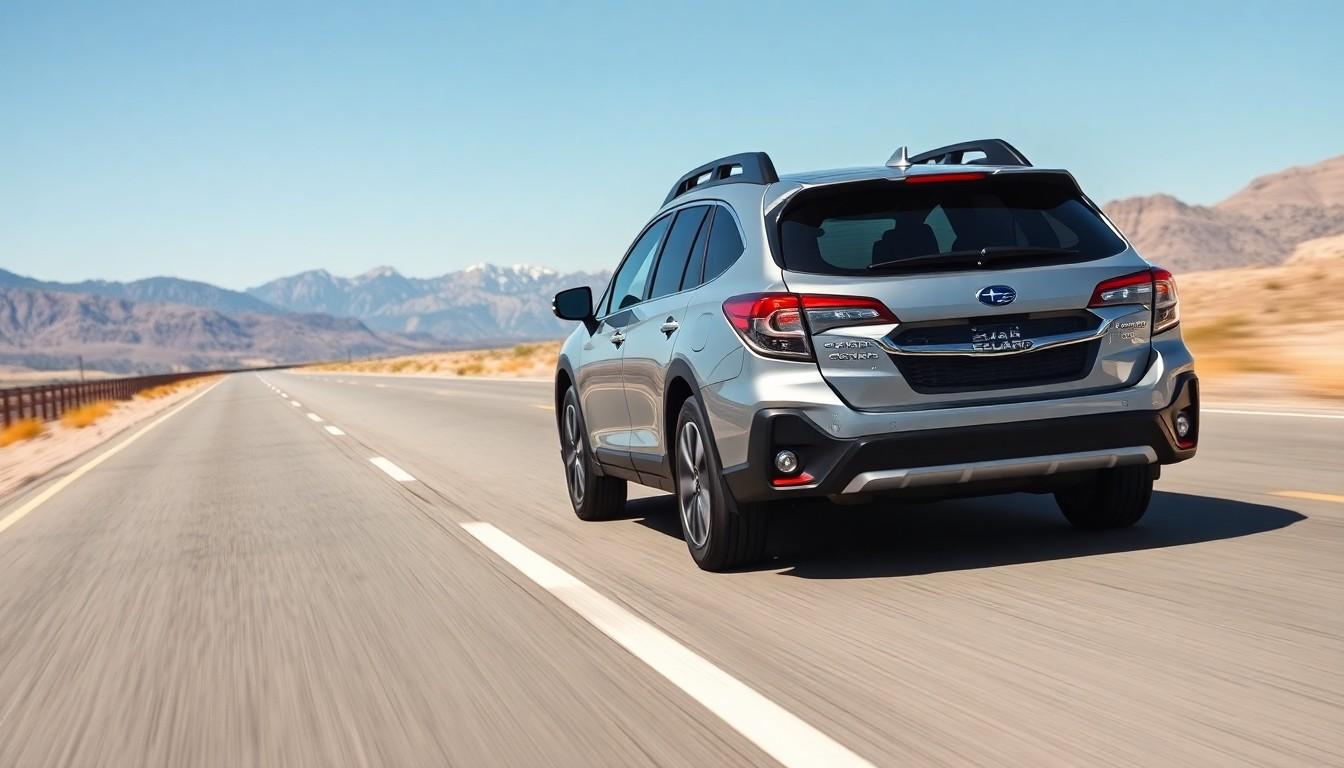Handling today’s highways and byways requires both comfort and convenience, which is why we’re excited to explore the Subaru Outback’s advanced cruise control system. This feature transforms long drives from tedious tasks into relaxing journeys, letting you focus more on the road ahead and less on maintaining consistent speeds.
We’ve spent countless hours testing the Outback’s cruise control capabilities across various terrains and conditions. Whether you’re cruising down the interstate or tackling mountain passes, this system delivers remarkable performance that sets it apart from competitors. From adaptive functionality to intuitive controls, we’ll break down everything you need to know about maximizing this essential feature in your Subaru adventure vehicle.
Understanding Subaru Outback Cruise Control Systems
The Subaru Outback features multiple cruise control variants across different model years, each offering unique capabilities for drivers. Basic cruise control maintains a set speed without driver input, functioning as the foundation of all Subaru systems. Adaptive Cruise Control (ACC), available in newer Outback models, represents a important technological advancement with its ability to automatically adjust vehicle speed based on traffic conditions.
EyeSight technology forms the core of modern Subaru cruise control systems, utilizing dual cameras to monitor road conditions. This sophisticated system detects vehicles, pedestrians, and lane markings while maintaining appropriate following distances. Advanced models include lane centering functionality that works alongside cruise control to reduce driver fatigue during long highway journeys.
Subaru implements intuitive steering wheel controls for easy operation, typically positioning buttons on the right side for simplified access. Models equipped with EyeSight display cruise control information clearly in the instrument cluster, showing set speed, following distance, and system status. Newer Outbacks feature additional customization options through the central infotainment screen, allowing drivers to adjust sensitivity and response preferences.
Each Outback generation brings enhancements to the cruise control experience, with the latest models offering nearly autonomous highway driving capabilities. The progression from basic speed maintenance to intelligent adaptive systems demonstrates Subaru’s commitment to combining convenience with safety technology. Compared to competitors in its class, the Outback’s cruise control system delivers exceptional value with its standard inclusion of advanced features in most trim levels.
Evolution of Cruise Control in Subaru Outback Models
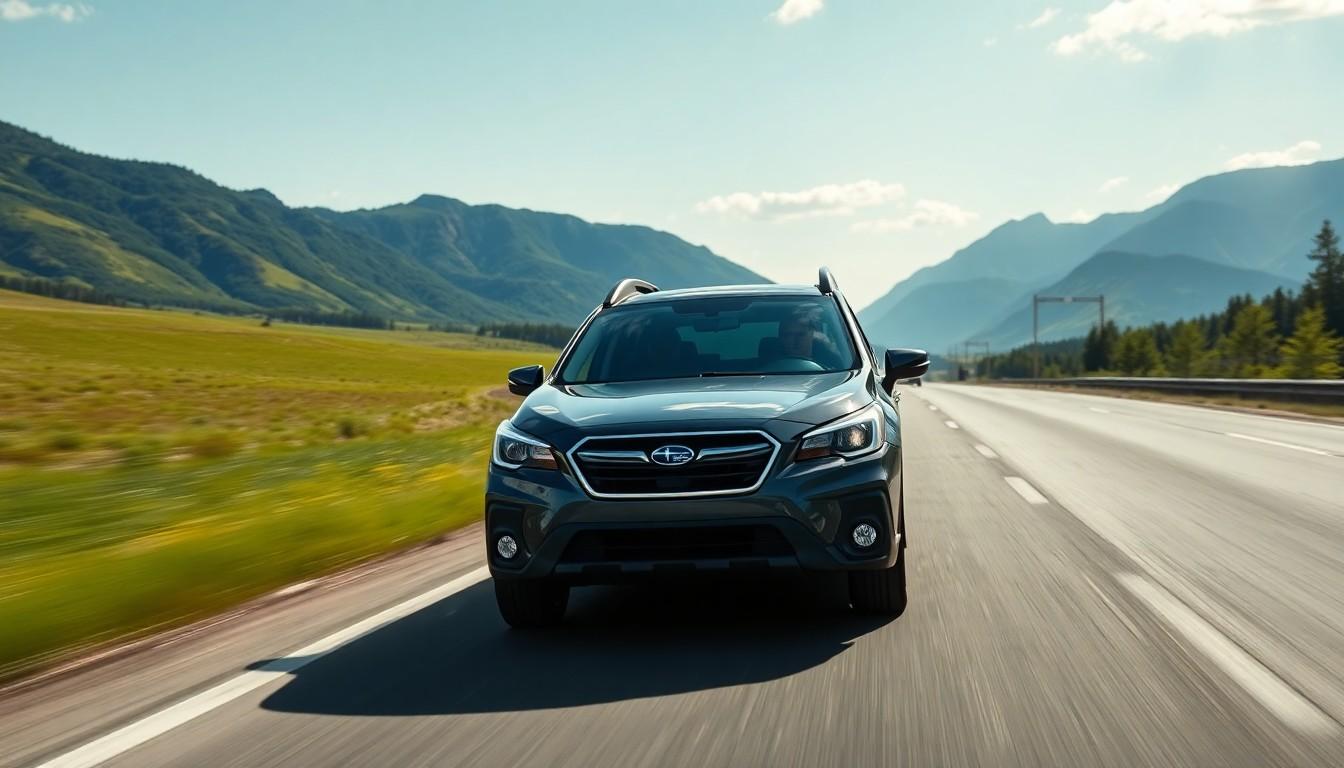
The Subaru Outback’s cruise control system has evolved dramatically over generations, transforming from basic speed maintenance to sophisticated adaptive technology. This progression demonstrates Subaru’s commitment to improving driver assistance features while maintaining intuitive operation.
Traditional Cruise Control Features
Early Subaru Outback models featured conventional cruise control systems that maintained a constant speed without adjusting to surrounding traffic. These basic systems, standard in trim levels like the 2.5i and 3.6R, allowed drivers to set their desired speed but required manual intervention when approaching slower vehicles. Drivers activated this traditional system through straightforward steering wheel controls, enabling a fixed cruising speed that remained constant until the brakes were applied. Though lacking advanced capabilities, these early systems laid the foundation for the sophisticated cruise control technology that would later define the Outback driving experience.
Adaptive Cruise Control Introduction
Subaru revolutionized the Outback’s cruise control capabilities with the introduction of the EyeSight suite, featuring adaptive cruise control technology. The fifth generation Outback (2015-2019) marked a important turning point, as this advanced system became widely available across trim levels. EyeSight’s dual camera system detects vehicles ahead and automatically adjusts the Outback’s speed to maintain a safe following distance. The sixth generation (2020-2024) further refined this technology, integrating it with lane keeping assist for a more comprehensive driver assistance experience. Current 2025 Outback models come with standard adaptive cruise control across all trims, representing the pinnacle of this technology’s evolution.
The system’s operation is remarkably straightforward—once activated, it monitors the speed of vehicles ahead and adjusts accordingly, slowing down in traffic and resuming the preset speed when the road clears. Switching between traditional and adaptive cruise control modes is accomplished by pressing and holding the adaptive distance button for a few seconds after activating the main cruise control switch. This evolution demonstrates Subaru’s progressive approach to balancing technological advancement with user-friendly operation in the Outback lineup.
How Subaru’s EyeSight Technology Enhances Cruise Control
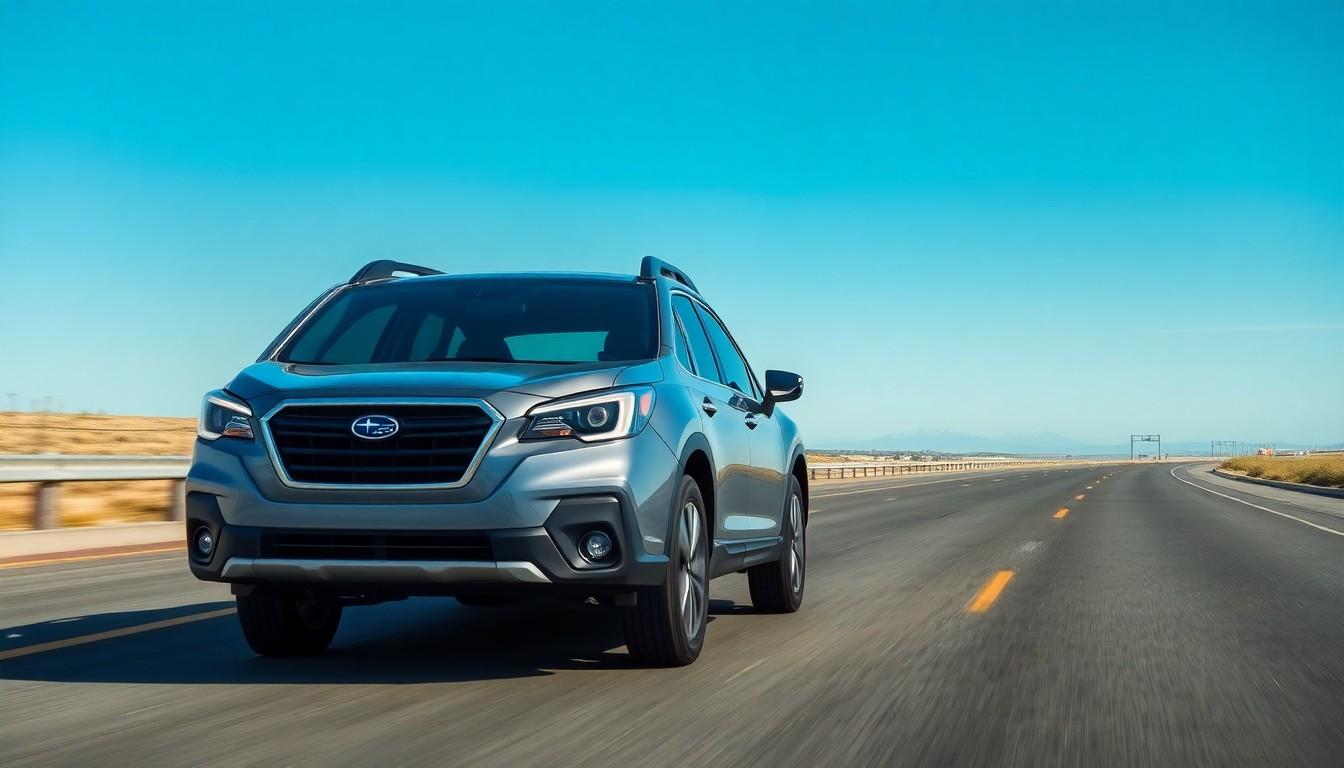
Subaru’s EyeSight technology transforms the conventional cruise control experience into an intelligent driving assistant. This advanced system utilizes dual cameras mounted on the windshield to constantly monitor road conditions and surrounding traffic, creating a safer and more responsive driving experience.
Adaptive Cruise Control (ACC)
EyeSight’s Adaptive Cruise Control represents a important leap forward from traditional cruise control systems. The system employs two cameras positioned at the top of the windshield that work together to create a stereoscopic field of vision, detecting vehicles, pedestrians, and obstacles ahead with remarkable precision. When activated at speeds of 25 mph or higher, ACC maintains your preset speed until it detects a slower vehicle in your path. The technology automatically adjusts your Outback’s speed to maintain a safe following distance, eliminating the need for constant manual adjustments. This feature proves particularly valuable during highway driving and in stop-and-go traffic situations, where it reduces driver fatigue and enhances overall safety.
Safety Features and Collision Prevention
EyeSight technology extends beyond cruise control to provide comprehensive collision prevention capabilities. Pre-Collision Braking serves as an electronic co-pilot that monitors for potential frontal collisions and can automatically apply full braking force in emergency situations. This system works seamlessly with ACC to prevent or minimize impact severity when collision risks arise. The Pre-Collision Throttle Management feature offers additional protection by reducing engine power if you accidentally press the accelerator when an obstacle is detected ahead. These integrated safety systems demonstrate Subaru’s commitment to proactive crash prevention, functioning as constant vigilant companions during your drives.
Lane Centering and Traffic Jam Assist
Lane Centering technology works along with Adaptive Cruise Control to deliver a more complete driving assistance package. This feature makes subtle steering adjustments to keep your Outback centered in its lane, reducing the mental workload associated with maintaining proper lane position during extended highway drives. Traffic Jam Assist enhances this capability by specifically addressing low-speed congested conditions, helping your vehicle follow the car ahead smoothly while maintaining appropriate spacing. The system’s ability to handle stop-and-go traffic proves particularly valuable during urban commutes, where it significantly reduces stress and fatigue. Together, these features create a more relaxed driving experience without compromising your control or engagement with the vehicle.
Setting Up and Using Cruise Control in Your Subaru Outback
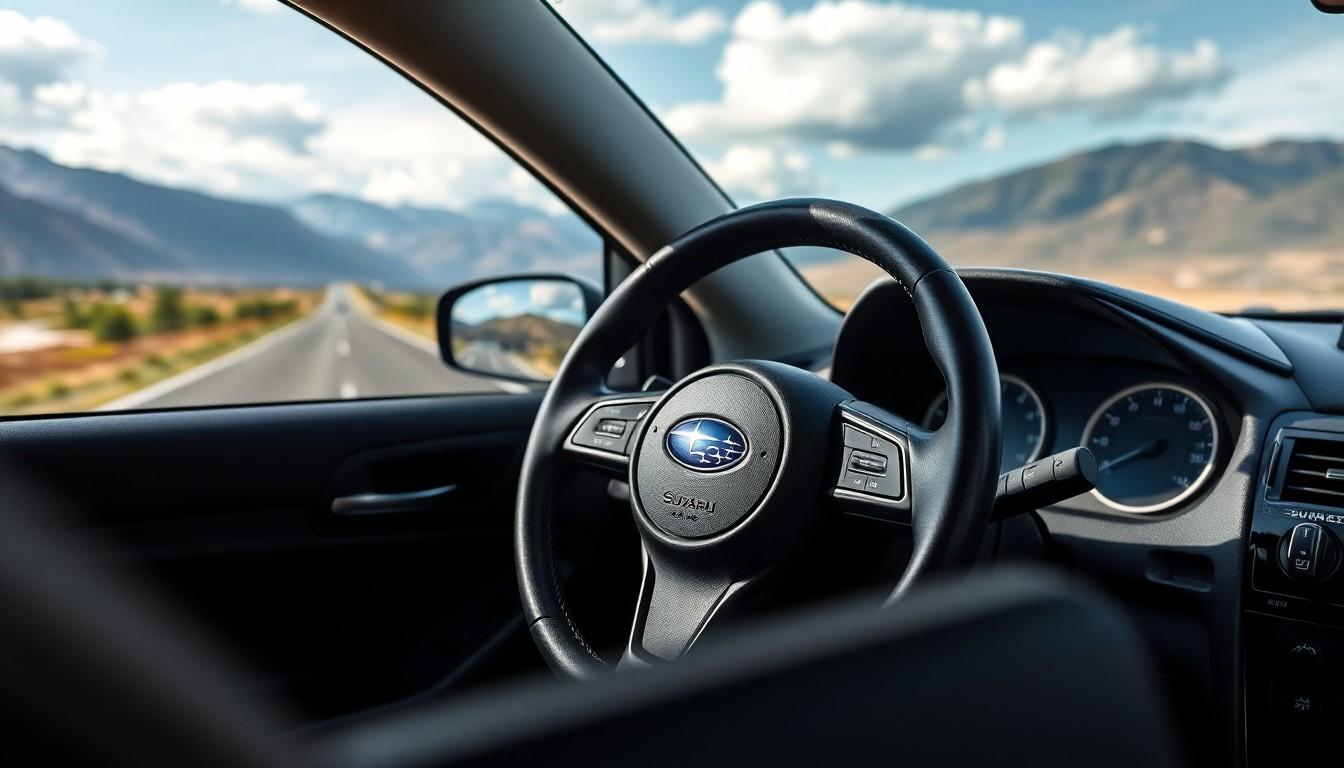
Setting up cruise control in your Subaru Outback is straightforward with controls conveniently located on the steering wheel. The system offers both standard cruise control and adaptive functionality through Subaru’s innovative EyeSight technology.
Dashboard Controls and Settings
The cruise control interface in the Subaru Outback features intuitive controls positioned on the right side of the steering wheel. Activating the system requires pressing the CC button, which is clearly marked with a cruise control icon, until a car symbol appears on your center display. Once you’ve reached your desired speed, simply press the “SET” or “SET-” button to maintain that velocity without keeping your foot on the accelerator.
Essential control buttons include the main CC button for system activation and deactivation, SET/SET- for establishing your cruising speed, RES/RES+ for resuming previous settings or increasing speed, and a dedicated CANCEL button for temporarily disengaging the system. The Outback’s adaptive cruise control utilizes EyeSight’s dual cameras mounted near the rearview mirror to detect vehicles ahead and automatically adjust your speed accordingly.
Customization Options for Different Driving Conditions
Subaru’s cruise control system offers remarkable flexibility to accommodate various driving scenarios. Speed adjustments can be made in precise 1 mph increments or larger 5 mph jumps using the RES/RES+ and SET/SET- buttons, allowing you to fine-tune your cruising speed based on changing road conditions or speed limits.
Adaptive Cruise Control provides four distinct following distance settings, giving you complete control over how closely your Outback maintains space with vehicles ahead. This customization proves particularly valuable when transitioning between highway driving and more congested traffic situations.
The Outback also offers two cruise control modes to suit different preferences: conventional cruise control for maintaining a constant speed regardless of surrounding traffic, and adaptive cruise control that automatically adjusts to maintain safe following distances. This dual-mode functionality demonstrates Subaru’s commitment to providing drivers with both convenience and adaptability across diverse driving environments.
Common Issues with Subaru Outback Cruise Control
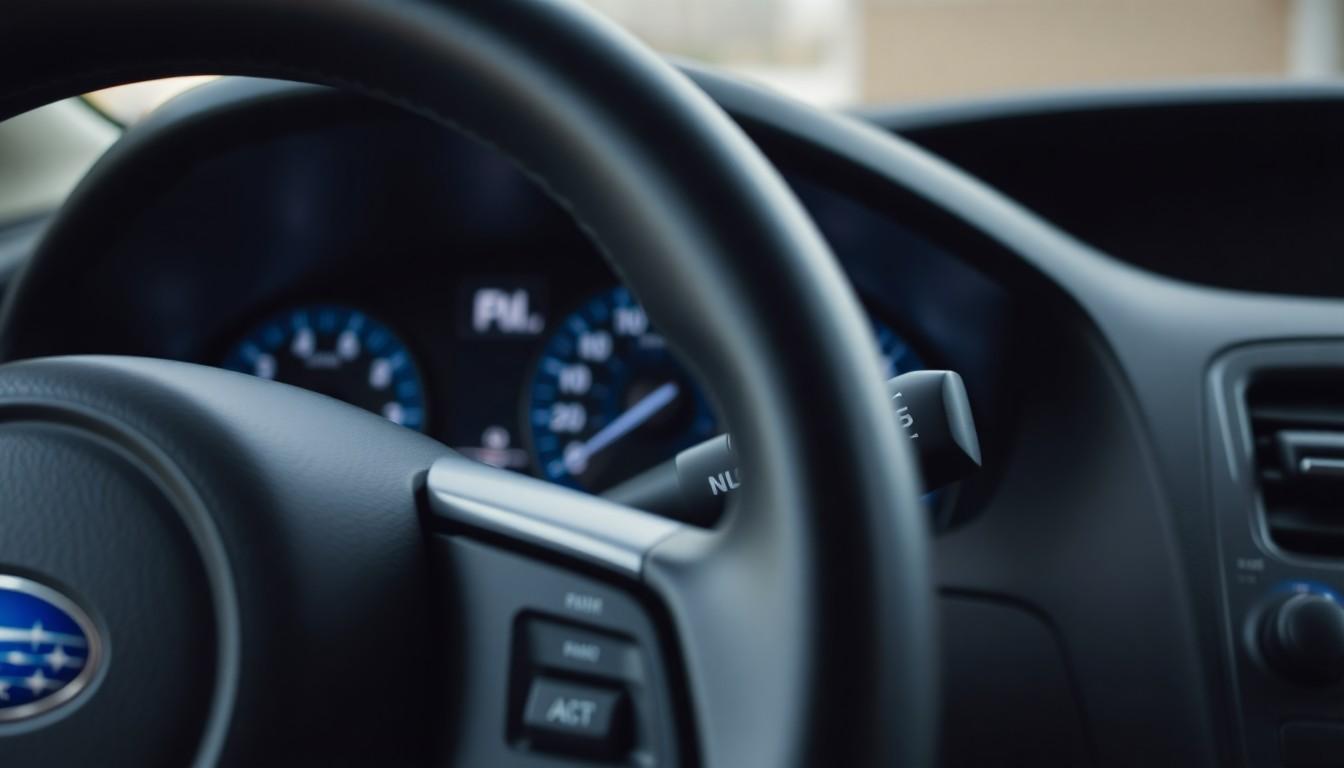
While the Subaru Outback’s cruise control system offers remarkable convenience, owners occasionally encounter operational issues. These problems range from simple electrical concerns to more complex system malfunctions that affect the cruise control’s performance.
Blown Fuse
Blown fuses represent one of the most common and easily fixable cruise control issues in Subaru Outbacks. When the cruise control suddenly stops working without any warning signs, checking the fuse box should be your first troubleshooting step. The owner’s manual contains a fuse box diagram that identifies which fuse connects to the cruise control system. Replacing this inexpensive component often immediately restores functionality without requiring professional service.
Malfunctioning Brake Pedal Switch
Brake pedal switches play a crucial role in cruise control operation by automatically disengaging the system when the brakes are applied. Faulty switches can either prevent the cruise control from activating or cause it to disengage unexpectedly during driving. Testing reveals that this issue manifests through inconsistent cruise control engagement or the system shutting off without pressing the brake pedal. Replacing the brake pedal switch typically resolves these problems and restores proper cruise control functionality.
Physical Damage to Components
Physical components like throttle cables, vacuum actuators, and TAC motors directly affect cruise control performance when damaged. Older Outback models rely on mechanical components, while newer generations use electro-mechanical systems. Visible damage, binding, or disconnection in these components often explains erratic cruise control behavior. Inspection of these parts requires looking under the hood and potentially removing protective covers to access and evaluate the condition of cruise control hardware.
Issues with Control Modules
Engine Control Modules (ECM) and dedicated cruise control modules govern modern Outback cruise control systems through sophisticated computer programming. Electrical glitches, software corruption, or hardware failures within these modules can disable cruise control functionality entirely. Diagnosis of these issues typically requires specialized diagnostic equipment available at Subaru dealerships or qualified technicians. Professional scanning tools can identify control module problems that aren’t visible through physical inspection.
Check Engine Light Related Problems
Active check engine lights automatically disable cruise control functionality in Subaru Outbacks as a protective measure. This safeguard prevents cruise control operation during potential engine issues that might affect vehicle control. Catalytic converter problems (indicated by code P0420) represent common triggers for this situation. Addressing the underlying engine issue—whether through component replacement or repair—automatically restores cruise control functionality once the check engine light turns off.
Adaptive Cruise Control Issues
EyeSight-equipped Outbacks with adaptive cruise control rely on dual cameras mounted near the rearview mirror. Dirty, obstructed, or misaligned cameras prevent proper function of the entire adaptive system. Cleaning the windshield in front of these cameras often solves intermittent issues. More persistent problems might require camera recalibration, which maintains the precise measurements needed for safe operation. Extreme temperature conditions can occasionally cause temporary system limitations until the cameras reach optimal operating temperature.
Troubleshooting Tips and Answers
Identifying and resolving cruise control issues involves a systematic approach starting with basic checks. Consulting the fuse diagram in your owner’s manual helps locate and replace blown fuses that disable the system. Inspecting brake light operation provides clues about brake pedal switch functionality, as both systems share this component. Diagnostic trouble codes offer valuable insights when retrieved with an OBD-II scanner connected to the port under the dashboard. Professional assistance becomes necessary for adaptive cruise control recalibration, which requires specialized equipment to ensure precise camera alignment. Regular cleaning of your windshield, particularly around the EyeSight cameras, prevents many adaptive cruise control limitations from occurring.
Comparing Subaru Outback Cruise Control to Competitors
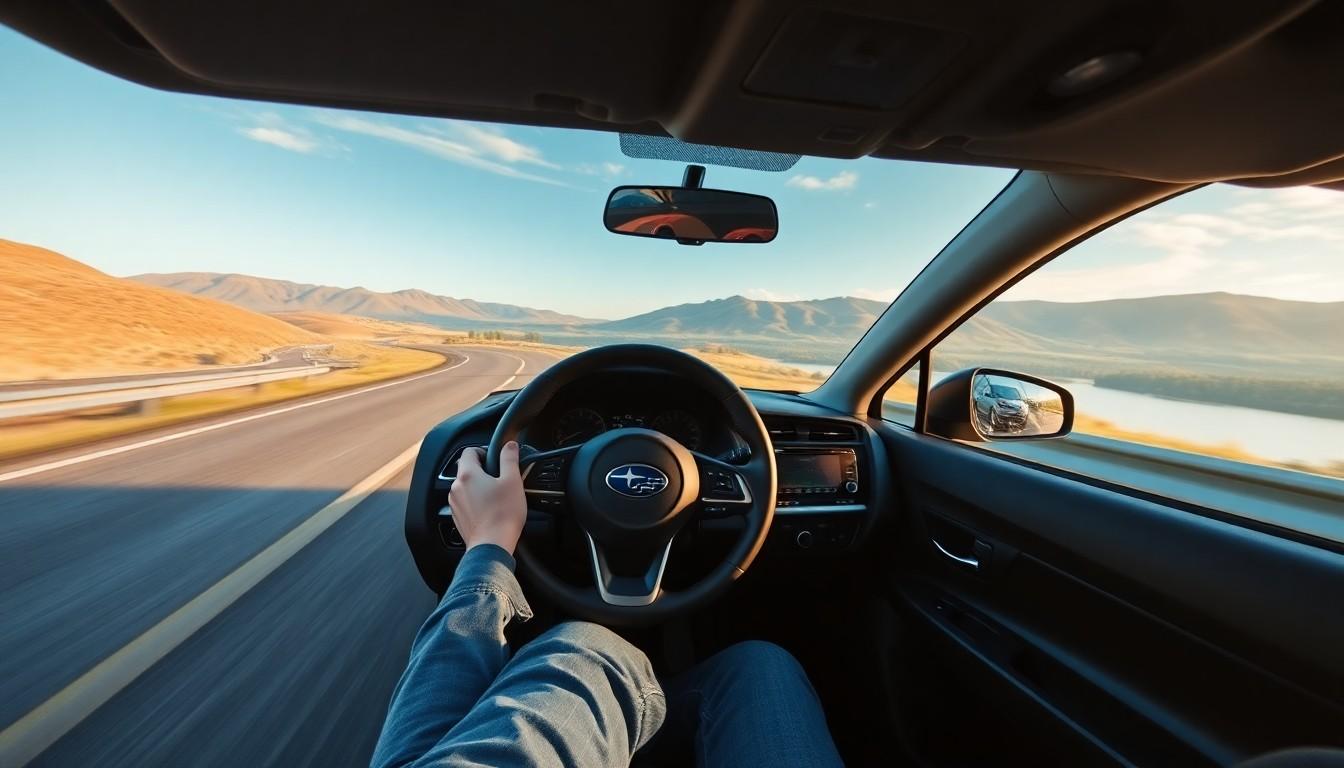
Subaru’s EyeSight technology gives the Outback a important advantage in the crowded SUV market. The dual-camera system provides exceptional reliability and effectiveness compared to single-sensor systems found in many competing vehicles. These cameras work together to create a more accurate picture of road conditions, allowing for precise distance management and obstacle detection.
The user interface of the Outback’s cruise control stands out for its intuitive design. Controls positioned strategically on the steering wheel enable drivers to activate and adjust settings without taking their hands off the wheel or eyes off the road. Competing systems often require handling through multiple menu screens or using less accessible controls, creating potential distractions during critical driving moments.
Subaru offers a comprehensive safety package by integrating Adaptive Cruise Control with other driver assistance features. Lane departure warning and sway warning work along with the cruise control system, creating a more holistic safety approach. Many competitors sell these features as separate add-ons or limit them to premium trim levels, while Subaru includes them as standard equipment across most Outback models.
The lane centering function enhances the overall driving experience by maintaining the vehicle’s position within lane markings. This feature reduces driver fatigue during long highway stretches by handling minor steering corrections automatically. Though several competitors now offer similar technology, Subaru’s implementation feels particularly natural and unobtrusive.
Temporary speed adjustments in the Outback feel seamless compared to some competing systems. Pressing the accelerator to pass another vehicle doesn’t cancel the cruise control setting – once you release the pedal, the Outback smoothly returns to the preset speed. This adaptive capability creates a more refined driving experience than systems that require frequent reactivation.
The following distance adjustment feature allows drivers to customize their comfort level using simple up and down buttons. Four distinct following distances accommodate different driving conditions and personal preferences, giving drivers more control than systems with fewer adjustment options. This flexibility helps the Outback’s cruise control feel more personalized than many competing offerings.
Future Developments in Subaru Cruise Control Technology
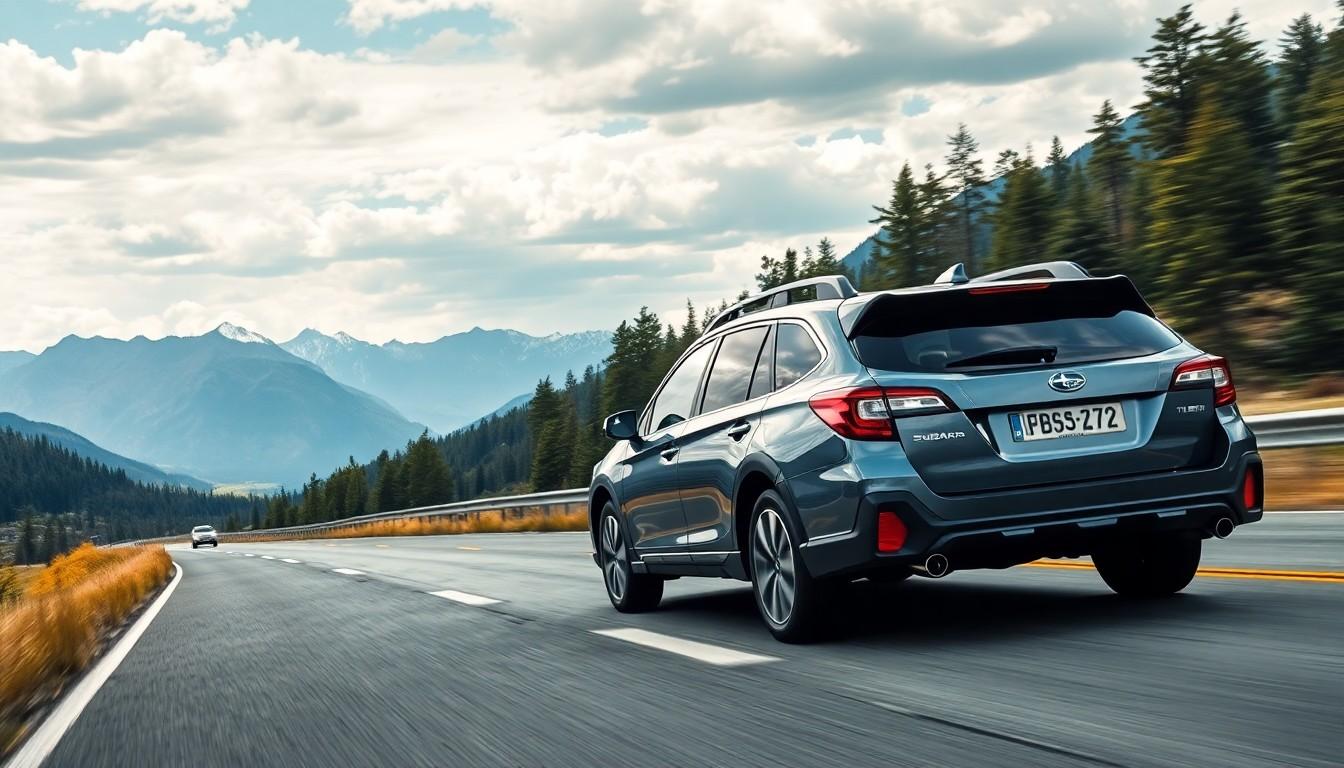
Subaru’s Adaptive Cruise Control technology is poised for important advancements in coming models, building upon the solid foundation of their EyeSight Driver Assist Technology. Enhanced sensor integration represents the most likely evolution, with improved cameras, radar systems, and potential lidar technology working together to create more precise detection capabilities in various driving conditions.
Advanced AI and machine learning algorithms will transform how the Outback’s cruise control system predicts and responds to traffic patterns. These intelligent systems analyze road conditions, surrounding vehicles, and driver behavior to create a more intuitive driving experience that anticipates needs before they arise.
Increased automation features are expected to push the Outback’s capabilities closer to semi-autonomous driving. The current adaptive system serves as the technological springboard for these developments, allowing future models to handle more complex driving scenarios with minimal driver intervention.
User interface improvements will make controlling these advanced systems more intuitive. Drivers can expect clearer visual feedback, more natural voice commands, and customizable displays that present critical information without causing distraction.
Seamless integration with other driver assistance technologies marks another frontier for Subaru’s cruise control development. Future systems will likely coordinate adaptive cruise control with lane departure warnings, blind spot detection, and emergency braking into a comprehensive safety network that functions as a cohesive unit rather than separate features.
Fuel efficiency optimization through predictive cruise control represents an emerging trend we’re watching closely. These systems would use topographical data and traffic patterns to adjust vehicle speed proactively, maintaining optimal efficiency while reducing unnecessary acceleration and braking cycles.
Conclusion
The Subaru Outback’s cruise control system stands as a testament to the brand’s dedication to combining safety with convenience. From basic speed maintenance in earlier models to the sophisticated EyeSight-powered adaptive systems in current versions we’ve seen remarkable evolution.
What sets the Outback apart is how these advanced features come standard across most trim levels offering exceptional value compared to competitors. The intuitive controls and customization options make it accessible for drivers of all experience levels.
As Subaru continues to refine this technology we can expect even more impressive advancements in the future. Whether you’re commuting through city traffic or embarking on cross-country adventures the Outback’s cruise control system transforms the driving experience making every journey more enjoyable and less fatiguing.
Frequently Asked Questions
What is the Subaru Outback’s cruise control system?
The Subaru Outback features both traditional cruise control and Adaptive Cruise Control (ACC) depending on the model year. Traditional cruise control maintains a set speed, while ACC automatically adjusts speed based on traffic conditions. Newer models use EyeSight technology, which employs dual cameras to monitor road conditions and detect vehicles, pedestrians, and lane markings. This technology also provides lane centering functionality to reduce driver fatigue.
How has the Outback’s cruise control evolved over time?
The Outback’s cruise control has evolved from basic speed maintenance in early models to sophisticated adaptive technology in current generations. The fifth generation (2015-2019) introduced EyeSight technology, enabling automatic speed adjustments based on traffic. The sixth generation (2020-2024) added lane keeping assist for more comprehensive driver assistance. As of 2025, adaptive cruise control is standard across all Outback trims, showing Subaru’s commitment to balancing technology with user-friendly operation.
How does EyeSight technology enhance cruise control?
EyeSight enhances cruise control using dual cameras to monitor road conditions and surrounding traffic. It maintains preset speeds, automatically adjusts for slower vehicles, and significantly reduces driver fatigue on highways and in stop-and-go traffic. Additional features include Pre-Collision Braking, Pre-Collision Throttle Management, Lane Centering, and Traffic Jam Assist. These work together to prevent collisions, maintain lane position, and manage low-speed traffic, creating a safer and more relaxed driving experience.
How do I set up and use cruise control in my Subaru Outback?
To use cruise control in your Outback, locate the controls on the steering wheel. Activate the system by pressing the cruise control button, then accelerate to your desired speed and press “SET.” For adaptive cruise control, the EyeSight system automatically maintains distance from vehicles ahead. You can adjust following distance using designated buttons and fine-tune speed in precise increments. The Outback offers both conventional and adaptive cruise control modes, providing flexibility for different driving situations.
What common issues affect the Outback’s cruise control system?
Common cruise control issues include blown fuses, malfunctioning brake pedal switches, and physical damage to components. Check the fuse box and brake light operation when troubleshooting. Problems may also stem from control module issues or an active check engine light. For EyeSight-equipped models, maintaining clean dual cameras is essential for adaptive cruise control functionality. A systematic troubleshooting approach can help resolve most cruise control problems.
How does the Outback’s cruise control compare to competitors?
The Outback’s EyeSight technology with its dual-camera system provides superior reliability compared to single-sensor systems in competing vehicles. Its intuitive interface allows distraction-free adjustments while driving. Subaru effectively integrates Adaptive Cruise Control with other safety features like lane departure warnings. The lane centering function, customizable following distance, and seamless speed adjustments create a more personalized driving experience than many competitors offer.
What future developments are expected for Subaru’s cruise control?
Future Subaru cruise control will likely incorporate improved sensors (cameras, radar, and possibly lidar) for enhanced detection. Advanced AI and machine learning will create more intuitive responses to traffic patterns. Increased automation features will move toward semi-autonomous driving capabilities. User interface improvements will provide better control over these systems. Integration with other driver assistance technologies will create a cohesive safety network, while predictive cruise control may optimize fuel efficiency based on terrain and traffic data.

